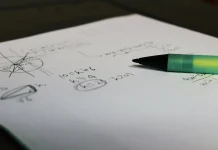When a child’s name is called, he should respond with a ‘Yes, Daddy?’ or ‘Yes, Mummy?’ but Charis wouldn’t even respond with a ‘Yes?’ It seemed he didn’t KNOW the name was his! We demonstrated name calling and response, instructed him, reminded him when he didn’t respond but to no avail.
When he was 3.5yrs, I expected the usual explosion of words and quirky conversations preschoolers are known for. But instead of the chatter I hoped for, he mostly echoed phrases he’d heard from cartoons, Bible verses, or familiar routines. He wasn’t mute – his communication was just different. He could sing all the lines of a hundred songs and even recite the ‘Sound of Music’ movie in order. But he wasn’t forming original sentences spontaneously. He used the same exact phrases, in the same tone, regardless of context, I began to wonder – was this just a speech delay, or something else?
I wasn’t a passive observer. I’m a linguist, an educator, and a mother. And as curiosity mixed with concern took its course in me, it became a mission to understand what was happening inside my son’s developing mind.
Gestalt Language Processing
Through looking up information and reading books and peer-reviewed articles by experts, I discovered something called “Gestalt Language Processing (GLP)” (1) – a style of language development where children speak in chunks or “scripts” instead of building language one word at a time. The chunks are phrases/sentences stored in their memory, often from a cartoon or a conversation they’ve heard before. It’s like their brain plays back full recordings instead of assembling original sentences. My son was doing just that.
And while GLP is often associated with autism or speech-language challenges, my son had no formal diagnosis. What mattered to me was to help him move beyond these scripts.
How We Used Everyday Moments as Language Lessons
We live in Nigeria, and immediately finding a professional familiar with GLP felt like chasing shadows. So I turned to something that didn’t require a clinic, a certificate, or expensive materials. I turned to our daily conversations and activities – and I began to “scaffold” (2).
Scaffolding, in simple terms, means providing just enough support to help a child do something they couldn’t do alone – and gradually removing that support as they grow. The concept was first related to scaffolding in building and construction. This is what Scaffolding looked like in our home:
Expanding: If he said, “Outside!” (scripted from earlier conversations), I’d gently reply, “Oh, you want to go outside? Yes, we can go outside now. Say: “Can we go outside, please?” I was showing him how to build his words.
Recasting: If he said “Food you eat!”, I’d say, “You’re hungry. Say: ‘I am hungry. I need to eat some food’ ” modeling flexible language. If he said: “Congratulations! See you next time!”, he was signalling the end of an activity. That statement scripted from the TV was used meaningfully each time. For instance,.during reading sessions, he said that when we got to the last page or when he was tired of reading. So, I would recast to relate it to the particular scenario.
Prompting: I’d ask, “What do you want to do? Do you want to draw or you want to paint? When he says “Draw!”, I guide him to say “I need paper to draw” encouraging him to use a full sentence instead of just nouns or verbs.
We did this during meals, playtime, car rides, evening strolls and bedtime routines. Every activity provides scaffolding moments which we employ. Over time, his language has begun to stretch. He still uses some chunks, but now he is combining, creating, and initiating speech in new ways.









